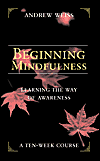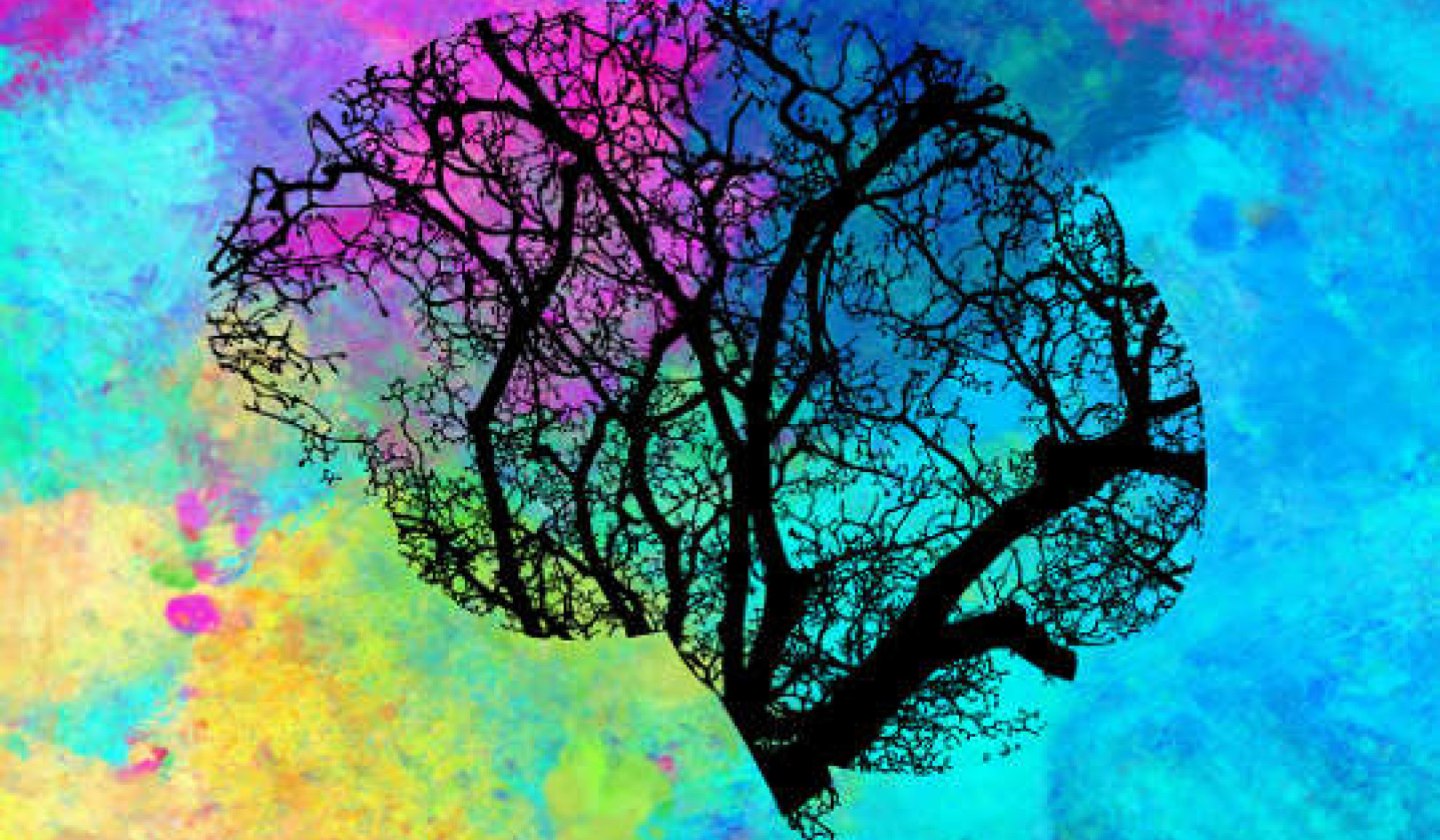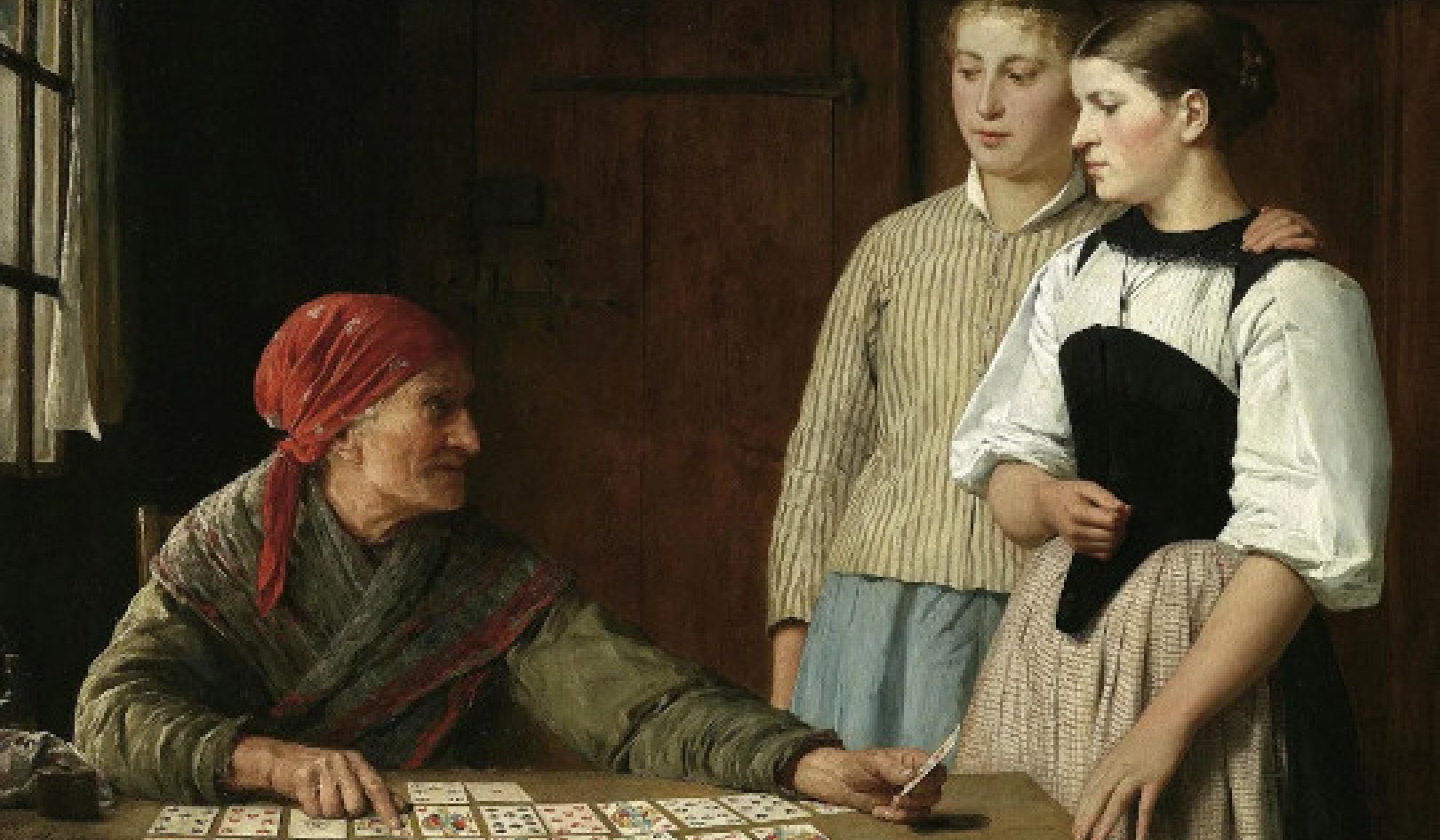
Do you remember seeing cartoons about this family scenario? The wife (or husband) has had a bad day at work, perhaps her boss has yelled at her. She comes home, gets angry, and yells at her spouse. The spouse, in turn, gets angry at the oldest child and yells at her; she then gets angry at her younger sibling and yells at him; he has no one younger to get angry at, so he explodes at the family dog and hits it. The result is an angry, suffering family; nobody feels good.
This scenario illustrates one of the most basic lessons of life: What we do comes back to us. In this case, anger begets anger. In India and most Asian countries (and increasingly in the West), this is known as the Law of Karma, or cause and effect.
The Buddha felt that understanding this was so fundamental that he required all of his monks and nuns to contemplate it every day. Each morning, after contemplating the impermanent nature of their bodies, their life spans, and everything else in the material world, the monks and nuns would contemplate this: "My actions are my only true possessions. I cannot escape the consequences of my actions. My actions are the ground on which I stand."
Our Actions Have Consequences
Most of the time, we are unaware of any except perhaps the most immediate of these consequences. We are like a person who has dropped a pebble into a pond and can only see, at best, one ripple the pebble made in the water. We know from our experience that the pebble actually causes many ripples, perhaps an infinite number, that extend all the way from the spot where it was dropped in the water to the edge of the pond.
As the family scenario shows us, our actions have as many consequences as the water has ripples. As the result of the wife's boss's anger, the family dog was hit. Perhaps the dog suffered a physical injury. We know some husbands would not have stopped at yelling at their wives, but might have hit them.
The boss's anger would then have had further consequences. The wife would have gone to the hospital, a doctor at the hospital would have had to work an extra shift because of another domestic abuse patient, the children at the doctor's home would not have had dinner with her that night and would have felt the loss of her company, and so on. All these consequences came from one outburst of anger.
The Seeds of Anger
Each person in the chain of karma also has a choice about how to act. For example, when most of us look at this scenario, what we see is that the wife has dumped the boss's anger on her husband, who in turn dumped it on his daughter, and so on.
But the situation is a little different. The husband, daughter, son, and even the dog all have the seeds of anger in them, just as the wife does. When the boss stimulated the wife's seed of anger at work, it got very large and out of control. When she showed her anger, she touched the seed of anger in her husband and his anger exploded.
The implications of this understanding are that each person in the chain can choose whether or not to act out the seed of anger within him or her. The husband could have listened to his wife's anger, told her how much it hurt him for her to be angry with him like that, and then asked her what had made her so angry. This would have given her the opportunity to touch the seed of her hurt as well as her seed of healing. Perhaps she could have also seen how wrong it was for her to yell at her husband. (If not, he should have reminded her of this!)
In this revised scenario, the husband has chosen not to carry along the karma of anger but to counteract it with actions of strength, self-confidence, love, and compassion. By doing this, he has created a different karma. One consequence of his actions would be a calmer household. As we can see, there would also be other consequences, perhaps not seen or noticed at the time but just as important.
For the husband to act in this way, he would have to have some understanding of himself, his own patterns of behavior, and his spouse and her patterns of behavior. This would be a bit unusual. Most of the time, most of us are running on auto-pilot: We react to situations out of our old habit energies, without any real understanding or awareness of what we're doing, why we're doing it, or what the consequences of our actions are.
Developing Some Awareness
If you have been practicing mindfulness, you are a lot more likely to have developed some awareness of yourself, your world, and the way your mind works. You are more likely to be aware of the preconceptions and old reactive patterns you bring to the situation. And once you are aware of those patterns, you can step around them. You can welcome them, embrace them, and not act (or react) out of them.
Your practices of mindfulness help you create some space around your thoughts, feelings, and perceptions. You might even experience this as a sense of spaciousness within your mind, or a sense that your skull is larger than your brain and that your brain has some space around it. Whatever the sensation is, the result is that you have some breathing room. Once you have breathing room, you can see the situation in front of you more clearly, and you can act in helpful, constructive ways.
When you hear people say that spiritual practices like mindfulness can help change your karma, this is part of what they are referring to. When we approach life without awareness, we allow our karma to run us -- that is, we unconsciously play out the consequences of our actions, our thoughts, our feelings, and our habit energy, which has been building up throughout our lives (or if you accept reincarnation, over our many lives). When the light of mindfulness is strong enough to illuminate our habitual reactions, we can act in more mindful ways, and when we do this, we break the pattern of our old karma -- we change it.
For the Buddha, the cause-and-effect nature of actions, or karma, was a subset of the more general, fundamental nature of the phenomenal world: "This is because that is," the Buddha said; "this is not because that is not." Things happen and manifest because the causes and conditions that allow them to happen are present (anger begets anger). When those causes and conditions go away, others arise and something else manifests or happens (compassion begets compassion).
Nothing in the cosmos is independent of anything else; everything relies on causes and conditions for its very existence. All things "inter-are." Nothing remains the same forever because the causes and conditions change. All things are impermanent.
Our actions are the results of causes and conditions from others, and the actions of others are the results of causes and conditions from us. If we can change our actions, we can create a chain of events that will change the karma of many beings.
When the Buddha saw how all things inter-are, he realized what causes suffering and what can transform suffering into joy -- in essence, he saw how we can liberate ourselves from our negative karma and uncover our joyful and spacious true nature. To give us the direct experience of that transformation, he taught four basic understandings that he called the "Four Noble Truths."
The First Noble Truth is that suffering exists. We all know this because we all experience it. The word the Buddha used for suffering was dukkha, which in the Buddha's day referred to the condition of a cart with one wheel that didn't work quite right. "Suffering" here means not just hunger, disease, anger, or oppression, although it certainly does mean those things; it also means the anguish we feel when our lives are not going quite right or when something is missing in our understanding of ourselves or our situation.
Once we acknowledge that suffering exists, we may feel relief (I know I did). Now we don't have to fight suffering off anymore or feel as though something is wrong about us that we experience suffering. A capricious god or blind fate has not picked us out to suffer.
Suffering is a basic condition of life. We all encounter it. Even the Buddha encountered suffering. He left his comfortable life as a prince because he experienced suffering and wanted to get to the root of it. So we are all in this same boat together, the boat of existence in the phenomenal world, the boat aboard which suffering exists and on which we encounter it.
The practices we have been doing, including becoming aware of areas of discomfort in our bodies, developing awareness of the feelings that lie within our discomfort, and becoming more aware of our thought patterns, including judgment and anger, are all different ways of touching the reality of suffering in our lives in a way that we can handle. These practices become our way of developing an awareness of the true nature of our suffering.
If we do our practices correctly, we maintain a balance between suffering and joy. Smiling to our pain is essential if we are not to drown in it. Drowning or wallowing in our suffering is not developing an awareness of suffering. We all spend time in the sewer, but most of us don't know anything else, and most of us don't know of what, exactly, the sewer consists. All we know is, we're suffering.
As we develop an awareness of our suffering, we also begin to understand the true nature of our suffering, which means understanding what caused it. Remember that everything arises because of causes and conditions. Suffering is also the result of this cause-and-effect nature of the phenomenal world.
This is the Second Noble Truth. Suffering has causes and conditions just like everything else, and the primary causes and conditions of suffering are attachment, aversion, and the kinds of "nourishments" to which we expose ourselves.
By "nourishments," I am not just referring to edible food; I am also referring to feelings, conversations, media, willfulness, anything we all encounter on any level. Everything we encounter can become a cause or condition for us to think, feel, or act in certain ways. Practicing with the Second Noble Truth means developing an increasing awareness of how everything we expose ourselves to affects us. The formal and informal practices of mindfulness are essential to developing this kind of awareness.
The Third Noble Truth follows from the second: There is a way out of suffering. Another way of saying this would be "There is more to life than suffering." Life contains suffering, but it also contains joy, love, kindness, and compassion. The Third Noble Truth helps to point us in a direction: We want to transform suffering, but into what?
For most of us, the natural process of transformation of suffering is that it turns into and nourishes compassion, loving-kindness, joy, and equanimity. In Buddhist literature, these four qualities are called the "Four Brahmaviharas." Their Sanskrit names are maitri (loving-kindness, also metta), karuna (compassion), mudita (joy), and uppekshaupekkha (equanimity).
So perhaps suffering is like a jewel in the rough. We enter deeply into the coal dust, and diamonds reveal themselves to us. I can't stress enough that this process of transformation is spontaneous. Please don't try to make it happen. Just water the seeds of your mindfulness to help keep it strong, embrace your suffering with your mindfulness, and let it do its work.
Don't Become Disconnected From Life
One idea I've heard often is that transforming suffering means becoming detached and emotionally neutral. In that view, the goal seems to be to observe suffering from a distance, not to feel it directly; then, if we don't feel suffering, we don't feel anything else, either. That is suppression, and it is not a helpful way to practice.
You don't want to become disconnected from life. You can enter deeply into the experience of the moment, be completely one with it, and not be annihilated. The key to entering deeply into your suffering and difficult feelings is to maintain a balance -- not to shy away from suffering, and at the same time, to do practices that nourish joy and happiness within you.
The Buddha suggests to us that if we want to transform our suffering, we first need to look deeply into the causes and conditions that created it. Then, once we have done this, we can assist transformation by exposing ourselves to healthful nourishments.
For an abused child to transform his suffering, for example, he might first have to remove himself from the environment where he is exposed to the "nourishments" of physical and emotional abuse. For a person who works for a television news program and finds herself becoming jaded and cynical, transforming her suffering may start with exposing herself to "nourishments" that inspire hope, faith, and joy in herself to counteract the exposure she has in her work to "nourishments" of anger, hatred, fear, and callousness.
Breaking free of the nourishments of suffering is virtually impossible. We would have to live in a completely different world for that to happen. Just waking up and walking out the door exposes us to toxic nourishments: polluted air and noise if we live in the city, the suffering of a fly being eaten by a frog if we live in the country.
Developing practices that help us nourish positive seeds in the storehouse consciousness is essential. The practices in Thich Nhat Hanh's Teachings on Love and Sharon Salzberg's books on metta or loving-kindness meditation are particularly helpful guides.
Strengthening our mindfulness is essential if we are to embrace our suffering and not drown in it. By nourishing mindfulness, we can make it strong enough to embrace the suffering and help it transform.
The Fourth Noble Truth tells us how to lead a life that creates causes and conditions leading to joy rather than suffering. It is known as the Noble Eightfold Path: Right View, Right Understanding, Right Mindfulness, Right Concentration, Right Effort, Right Livelihood, Right Speech, and Right Action. Engaging in the practices of mindfulness with persistence and ever deepening attention will lead us to understand each aspect of the Noble Eightfold Path. For a more detailed introduction to the Noble Eightfold Path, Thich Nhat Hanh's The Heart of the Buddha's Teaching Compass of Zen offer differing and complementary approaches. and Seung Sahn's
Each step we take along the path of mindfulness shows us that our practice of mindfulness does not just benefit us. We are at this moment the recipients of the karma of all actions that have come before us, and each action we take contains consequences that will affect all who come after us. Please don't get paralyzed by this; for most people I know who practice mindfulness and have come to this awareness, it is quite liberating. After all, I am not the only person whose thoughts and actions will affect what happens; this is true of everyone. I am not the only person from whom everything originates; things originate from everyone. The living realization of interbeing means that at some level we understand that we are not alone or separate; if I am responsible to you, then you are also responsible to me.
None of us can live a life in which every action creates only positive consequences. At best, the consequences of each action we take will be mixed. All we can do is to live as mindfully as possible and to expand our horizons so that we start seeing more and more of the ripples in the pond when we drop that pebble. As we practice the art of mindful living, a spaciousness will open up for us around our feelings, thoughts, and perceptions, and we will be less likely to be reactive to the situations of our lives. When we are reactive, we carry forward the karma of what is given us in that moment, whether good or bad. When we can live more mindfully, we become better at choosing how to act, and we have the potential to create a better situation for everyone. As we transform our suffering, everybody benefits. As we liberate ourselves from the awful effects of our karma, we liberate everyone.
Reprinted with permission of the publisher,
New World Library. ©2004.
http://www.newworldlibrary.com
Article Source
Beginning Mindfulness: Learning the Way of Awareness
by Andrew Weiss.
 Knowing that most people do not stop their lives to engage in spiritual practice, Buddhist teacher Andrew Weiss has always taught the direct application of practice to daily life. While also teaching sitting and walking meditation, he emphasizes mindfulness — the practice of seeing every action as an opportunity to awaken meditative inquiry. Beginning Mindfulness is intended for anyone practicing in daily life without the luxury of long meditation retreats. Weiss skillfully blends the traditions of his teachers into an easy and humorous program of learning the Buddhist art of mindfulness.
Knowing that most people do not stop their lives to engage in spiritual practice, Buddhist teacher Andrew Weiss has always taught the direct application of practice to daily life. While also teaching sitting and walking meditation, he emphasizes mindfulness — the practice of seeing every action as an opportunity to awaken meditative inquiry. Beginning Mindfulness is intended for anyone practicing in daily life without the luxury of long meditation retreats. Weiss skillfully blends the traditions of his teachers into an easy and humorous program of learning the Buddhist art of mindfulness.
Info/Order this paperback book or download the Kindle edition.
About the Author
Meditation teacher Andrew JiYu Weiss is ordained in both Thich Nhat Hanh's Order of Interbeing and the White Plum Lineage of the Japanese Soto Zen tradition. Andrew is founder of the Clock Tower Sangha in Maynard, Massachusetts. Visit his website at www.beginningmindfulness.com.
Related Books:
at InnerSelf Market and Amazon

























